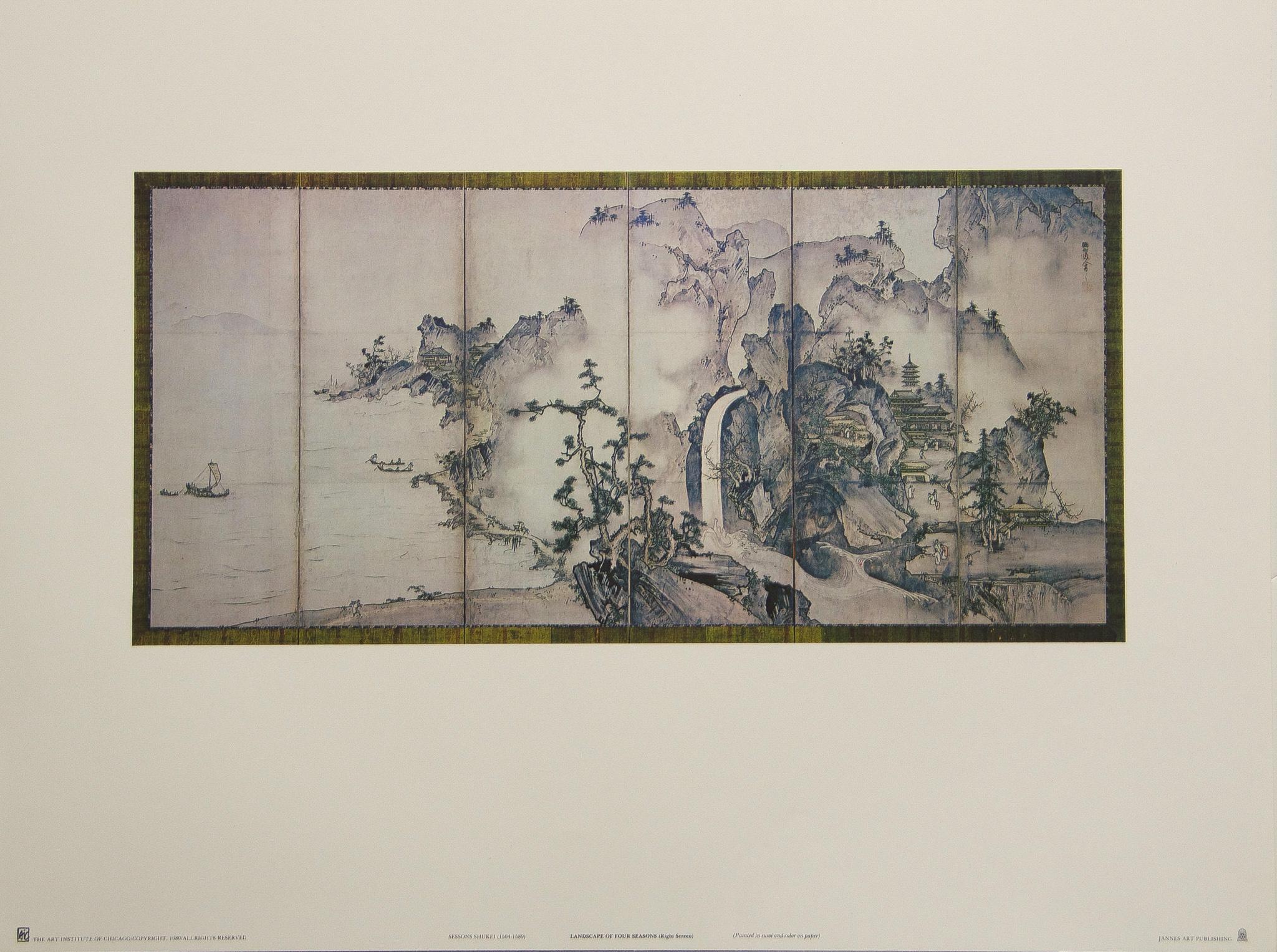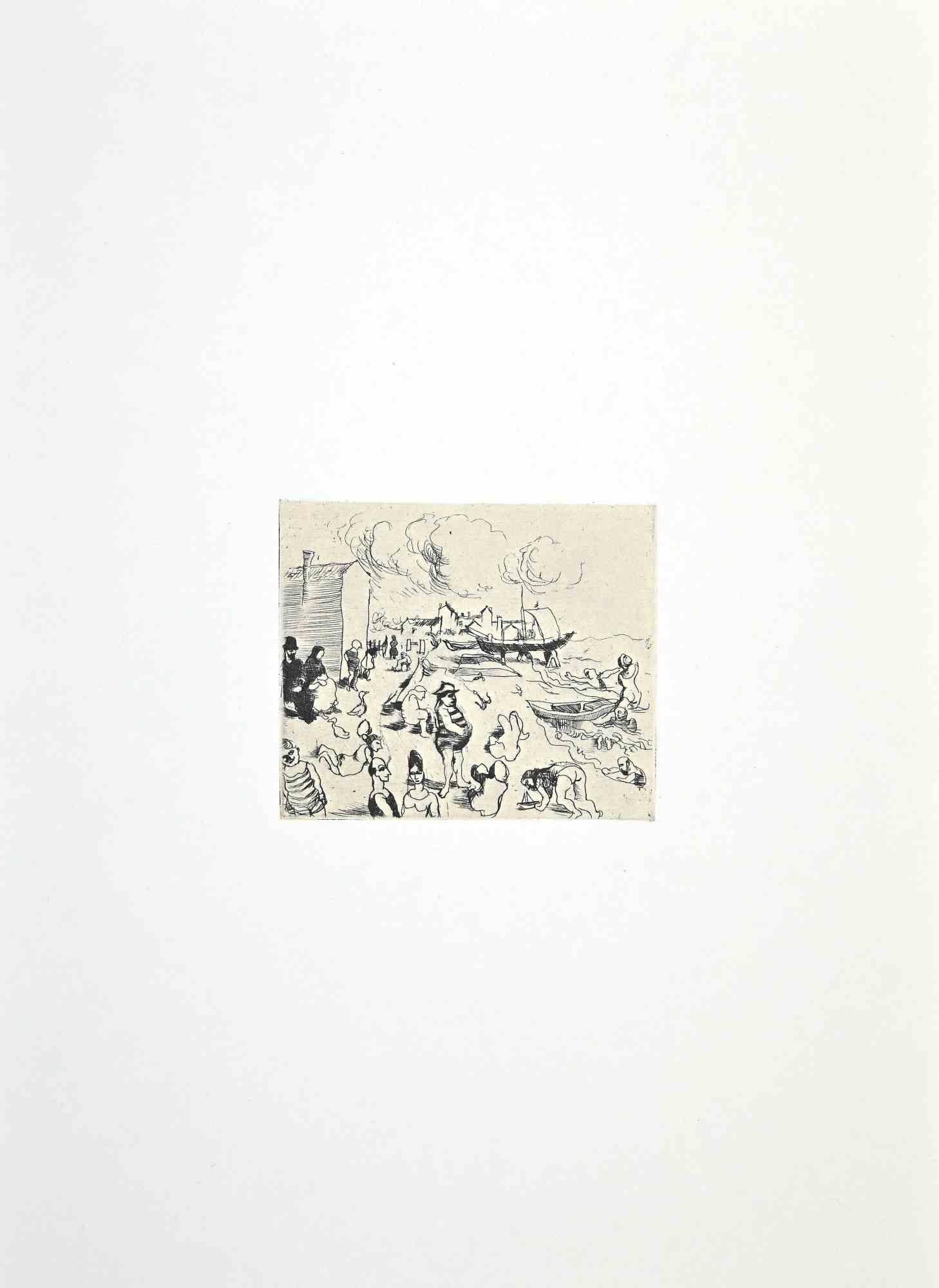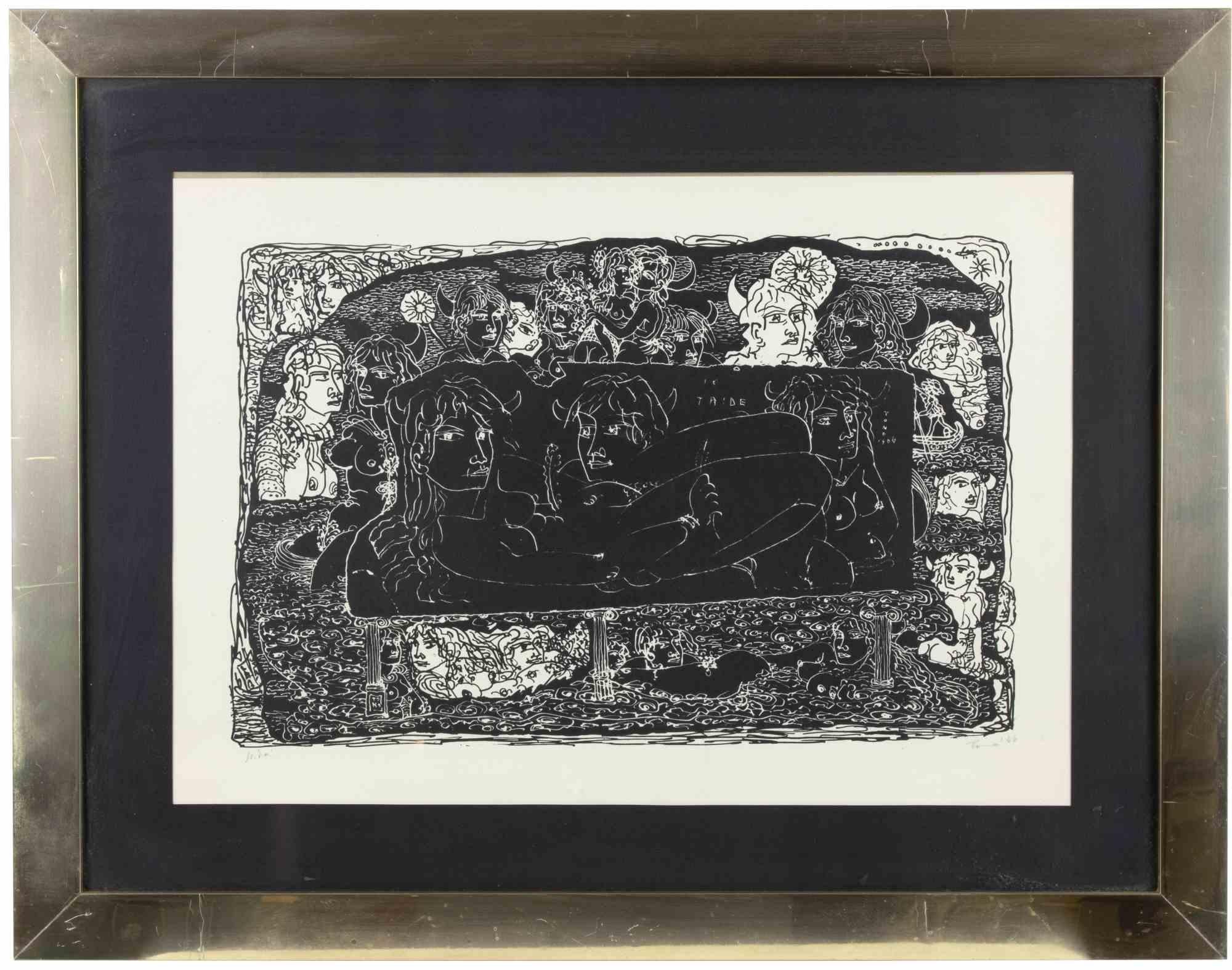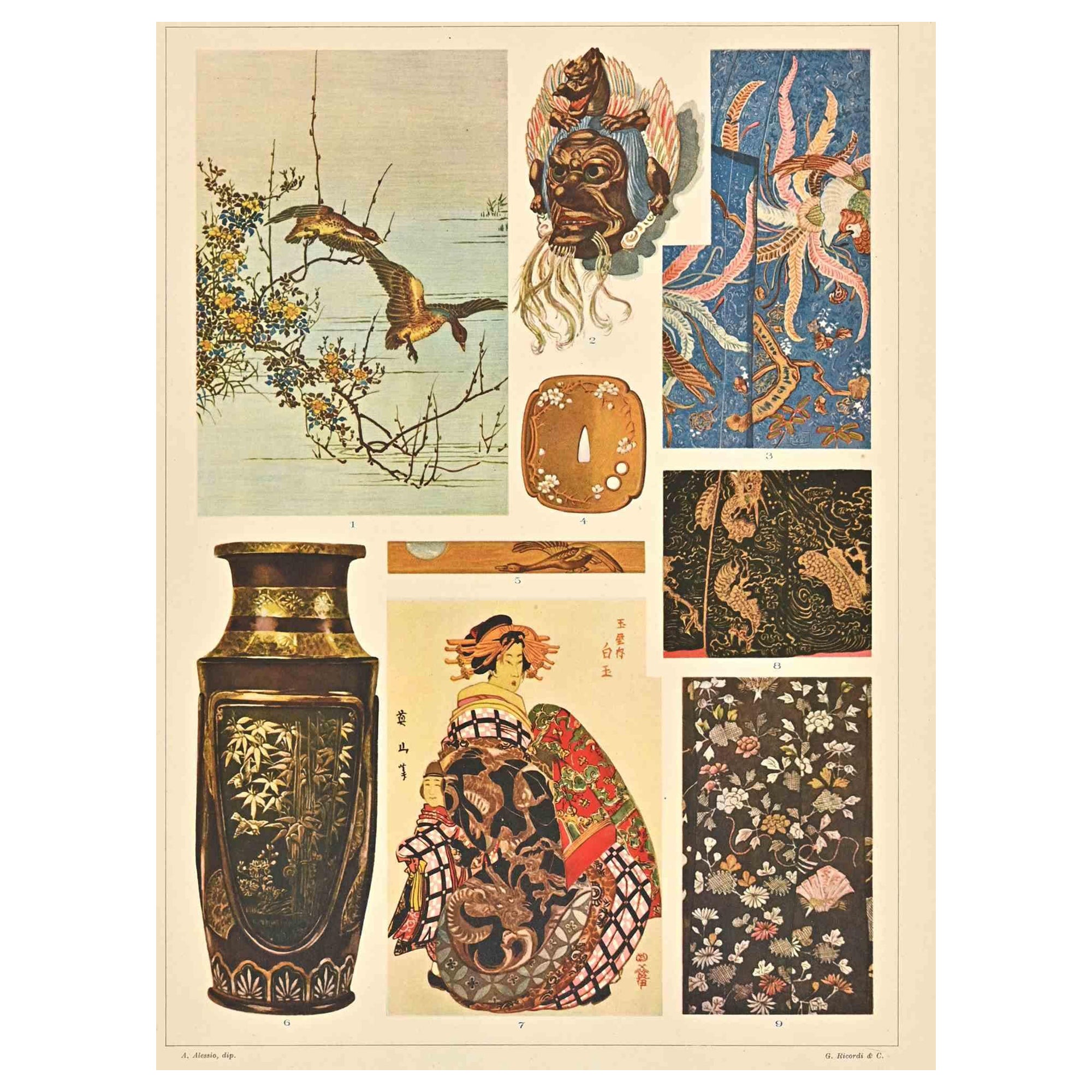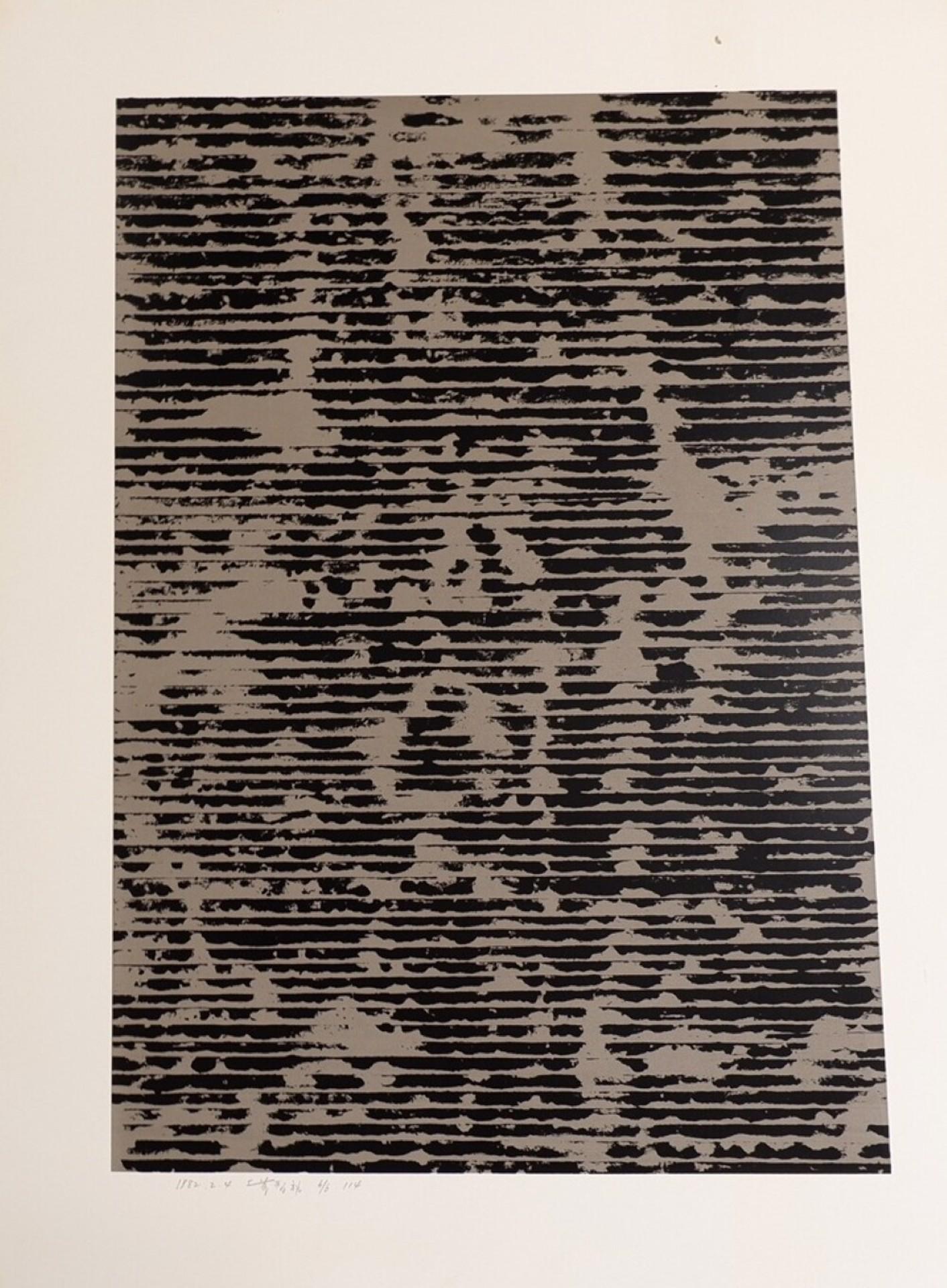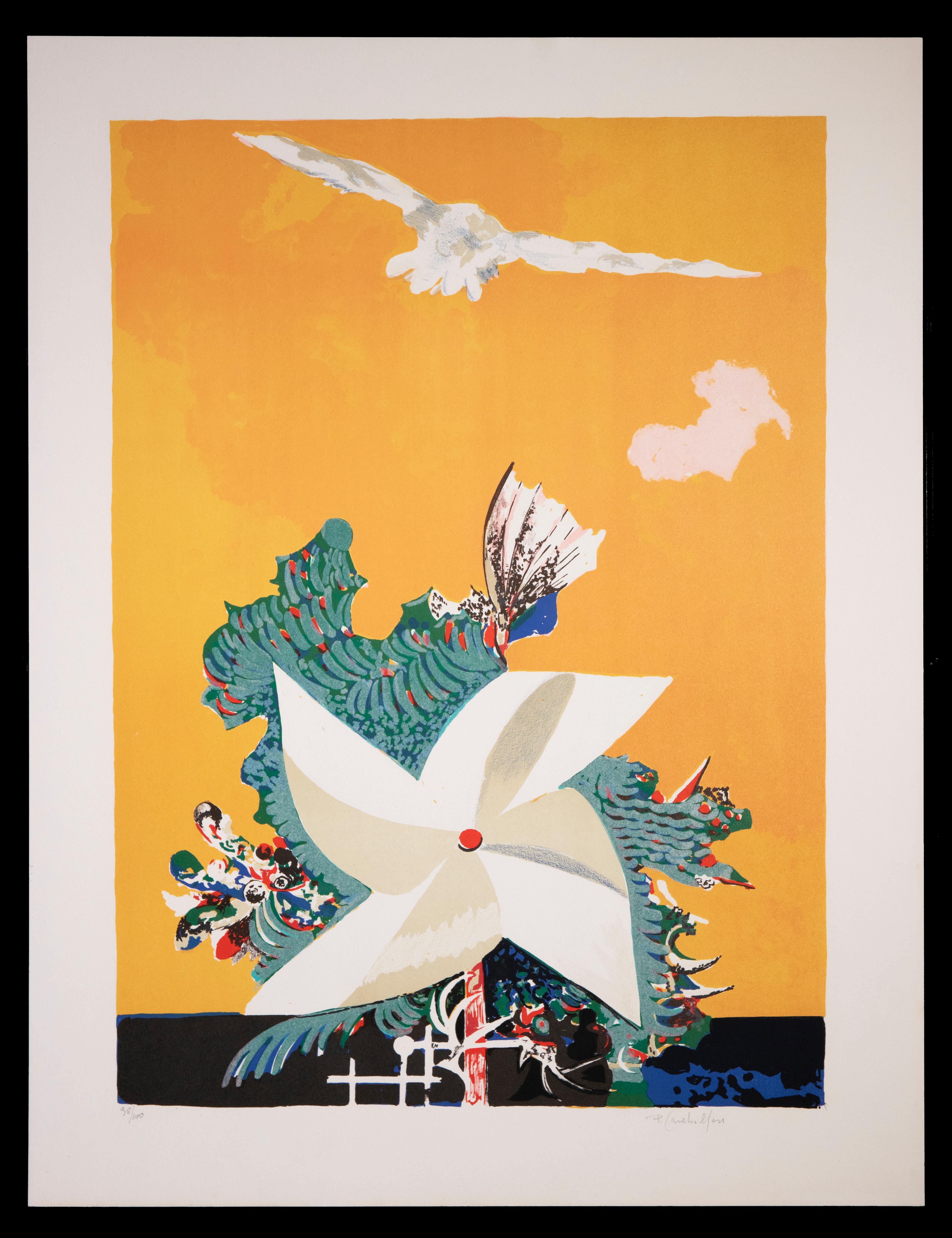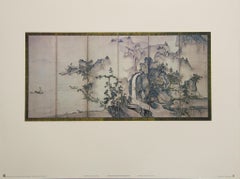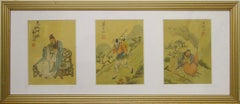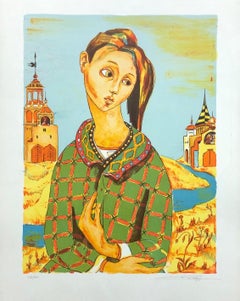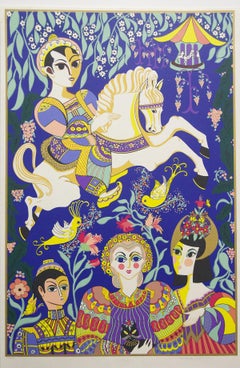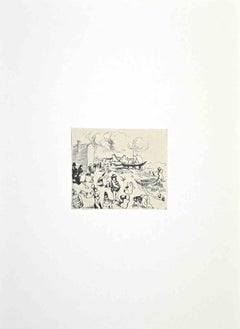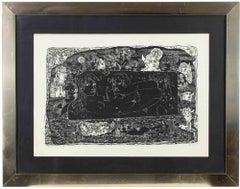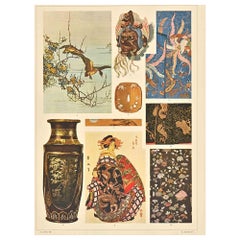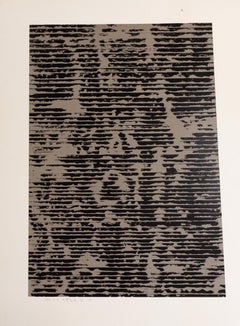Items Similar to "Subject of Foreigners, One of a Pair of Screens", Published by Jannes Art 1980.
Want more images or videos?
Request additional images or videos from the seller
1 of 5
Unknown"Subject of Foreigners, One of a Pair of Screens", Published by Jannes Art 1980.1980
1980
$120
$15020% Off
£91.75
£114.6920% Off
€105.02
€131.2820% Off
CA$169.21
CA$211.5220% Off
A$184.21
A$230.2620% Off
CHF 98.34
CHF 122.9220% Off
MX$2,223.82
MX$2,779.7820% Off
NOK 1,236.44
NOK 1,545.5620% Off
SEK 1,149.19
SEK 1,436.4920% Off
DKK 784.37
DKK 980.4720% Off
About the Item
Lithographic print titled, "Subject of Foreigners, One of a Pair of Screens" by unknown Artist. Published by Jannes Art Publishing and The Art Institue of Chicago/Copyright, 1980. Print measures 18 in x 24 in and is in good condition.
- Creation Year:1980
- Dimensions:Height: 18 in (45.72 cm)Width: 24 in (60.96 cm)
- Medium:
- Period:
- Condition:
- Gallery Location:Chesterfield, MI
- Reference Number:1stDibs: LU126319625012
About the Seller
4.8
Vetted Professional Seller
Every seller passes strict standards for authenticity and reliability
Established in 2013
1stDibs seller since 2019
340 sales on 1stDibs
Typical response time: 1 to 2 days
- ShippingRetrieving quote...Shipping from: Chesterfield, MI
- Return Policy
More From This Seller
View All"Landscape of Four Seasons" (Right Screen) by Sessons Shukei. Pub by Jannes Art.
Located in Chesterfield, MI
"Landscape of Four Seasons" (Right Screen) by Sessons Shukei
Published by Jannes Art Publishing. The Art Institue of Chicago/Copyright, 1980.
Print Meas...
Category
20th Century Landscape Prints
Materials
Lithograph
Framed Painted Chinese Silk Screen Portraits - Made in China
Located in Chesterfield, MI
Framed vintage Chinese landscape/portrait paintings on silk paper. All three paintings are in great condition, unframed they measure 6 in x 5 in, with framing the entire piece measur...
Category
20th Century Portrait Paintings
Materials
Silk, Paint
$160 Sale Price
20% Off
(Title Unknown) Limited Edition Print-Artist Signature is Illegible
Located in Chesterfield, MI
Limited Edition Print. Signed by artist (signature is illegible). The print measures 24.75 x 19.75 inches and is unframed. The date of creation is unknown, but is believed to be with...
Category
Late 20th Century Portrait Prints
Materials
Lithograph
$280 Sale Price
20% Off
Untitled Mythical Piece by Artist (signature ineligible). Limited Edition 50/200
Located in Chesterfield, MI
Lithograph By Marice B (ineligible)
Signed by Artist
Measures 31.5 x 21 in.
In Good/Fair Condition
Category
20th Century Figurative Prints
Materials
Lithograph
$160 Sale Price
20% Off
"Lee Tong-Yang" by Yu Yen Yang. New York Graphic Society Print.
Located in Chesterfield, MI
Published By New York Graphic Society
Printed In 1978
In Good Condition
Measures 39 x 17.5 in.
Category
20th Century Prints and Multiples
Materials
Lithograph
$160 Sale Price
20% Off
"Tranquility" Lithographic Print.
Located in Chesterfield, MI
Abstract Floral Print
Illegible Signature - C. Rowland (?)
Good Condition
Measures 19 in x 25 in.
Category
20th Century Abstract Prints
Materials
Lithograph
$140 Sale Price
20% Off
You May Also Like
At the Sea - Offset Print by Franco Gentilini - 1970s
By Franco Gentilini
Located in Roma, IT
At the sea is a Vintage Offset Print on ivory-colored paper, realized by Franco Gentilini (Italian Painter, 1909-1981) in the 1970s.
The state of preservation of the artwork is exce...
Category
1970s Modern Figurative Prints
Materials
Paper, Offset
Untitled - Lithograph by Tono Zancanaro - 1966
By Tono Zancanaro
Located in Roma, IT
Untitled is a modern artwork realized by Tono Zancanaro in 1966.
Black and white lithograph.
Hand signed and dated on the lower margin.
Artist's proof (as reported on the lower ma...
Category
1960s Contemporary Figurative Prints
Materials
Lithograph
Decorative Motifs- Japanese - Chromolithograph by A. Alessio - Early 20th Centur
Located in Roma, IT
Decorative Motifs - Japanese Styles is a print on ivory-colored paper realized by Andrea Alessio in the early 20th Century. Signed on the plate on the lower.
Vintage Chromolithogra...
Category
Early 20th Century Modern Figurative Prints
Materials
Lithograph
Untitled, 1982 Limited Edition of 6 by Chiyu Uemae, signed, dated and numbered
Located in Hong Kong, HK
Untitled (1982)
Screenprint on wove paper
Signed, dated and numbered by the artist.
Date: 1982 2 4
Ed. 6/6
50.9 x 34.6 cm (Image)
62.8 x 46.4 cm (Sheet)
This screenprint by Chiyu Ue...
Category
1980s Prints and Multiples
Materials
Screen
Composition - Original Lithograph by Pietro Carabellese - 1970s
By Pietro Carabellese
Located in Roma, IT
Composition is an original lithograph, realized by Pietro Carabellese in the 1970s.
Hand-signed on the bottom right. Numbered on the bottom left. Edition of 100 plus 20 Artist's P...
Category
1970s Contemporary Figurative Prints
Materials
Lithograph
CHINESE AUGURAL PRINT - Print on paper with frame 1980s
Located in Napoli, IT
Chinese augural prints art edition Menarini Florence 1982. Linked to Chinese folk customs and daily life, the prints are popular ornaments for Lunar New Year decorations and express ...
Category
1980s Modern Figurative Prints
Materials
Color
More Ways To Browse
Girls And Horses
House Plant Art
Hug Sculpture
In Case Of Emergency
Karen Daigle
Kaws Blue Companion
Kaws Clean Slate
Louise Brooks
Malta Painting
Mechanical Animal
Mexican Alebrijes
Nora Pineda
Odetta Vintage
Otter Sculpture
Painting Woman 1920s
Paris Scene Painting Signed Andrea
Paul Bright
Persian Art Antique Framed
